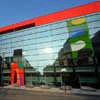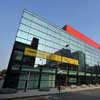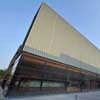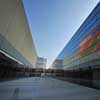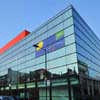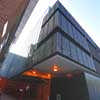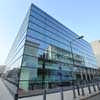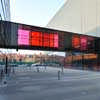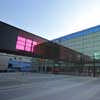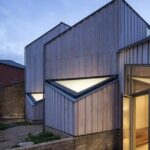Blizard Building, Will Alsop London, Newark Street Project, Design, Image
Blizard Building London : Institute of Cell + Molecular Science
Institute of Cell + Molecular Science London design by Will Alsop, England, UK
26 Jun 2010
Blizard Building by Will Alsop
Institute of Cell + Molecular Science
Address: 4 Newark St, London, E1
Date: 2006
Architect: Alsop Design Ltd + Amec Design & Management
Client: Queen Mary University of London
RIBA Awards – 2006 – see 2006, East London
Blizard building
Design: Will Alsop
Sir William Blizard
The Institute takes its name from Sir William Blizard, the founder of the London Hospital Medical College in 1785.
Award winning building design
The Institute is housed in the Blizard Building in Whitechapel. This unique research building provides state-of-the-art laboratory and office accommodation based on an innovative open plan design, a 400 seat lecture theatre, meeting rooms and core facilities in:
Flow Cytometry,
Imaging,
Global siRNA screening and
Transgenics.
The large open plan laboratories and juxtaposition of research Centres from different backgrounds provides the perfect environment for the development of interdisciplinary collaborative research.
Photos © Nick Weall, from 26 Jun 2010:
Blizard Building London
The Blizard Building of Barts and The London School of Medicine and Dentistry is named after Sir William Blizard FRS PRCS, who led the foundation of the London Hospital Medical College.
The building is home to the Blizard Institute and was opened in October 2005 by HRH The Princess Royal, Chancellor of the University of London.
The origins of this state-of-the-art centre for research and education began at the dawn of the 21st century when the case for a new facility for the School of Medicine and Dentistry at Whitechapel was approved. A total amount of £45 million was invested in the project which took just under five years to reach fruition. The foundation stone was laid by Professor Colin Blakemore FRS in November 2003.
The building was designed by leading architect Will Alsop in partnership with Amec with its 9000m2 providing world-class teaching and research facilities including open-plan laboratories, office space and the 400-seat Perrin lecture theatre.
Also housed within the building is a public ‘understanding of science facility’; the Centre of the Cell. This interactive education centre is aimed at children in the local community who are encouraged to develop an interest in science and research.
Architectural concept
The building is divided into four main areas; laboratory research space, study and seminar spaces, reception area, cafeteria and lecture theatre and site deliveries and parking. A combination of open-plan and cellular offices is arranged along the perimeter of the glass box with the void in the centre allowing natural light to pour down into the lower ground. This void also accommodates the four pods. These pods are designed to appear as ‘a family of objects floating freely in the large, airy volume’ and are intended to evoke associations with cellular and molecular forms.
Internationally recognised sculptor, painter and artist, Professor Bruce McLean, formerly Head of Graduate Painting at the Slade School of Fine Art at UCL, was commissioned to add the colour to the glass walls. The panels contain a mixture of words and images, the words chosen by Professor Mike Curtis and Professor Fran Balkwill for their multiple meanings. They include Genome, Lipids, Proteins, Networks, Pathways and Architectural Genes.
Location: 4 Newark Street, London, England, UK
London Buildings
Contemporary London Architecture
London Architecture Designs – chronological list
London Architecture Walking Tours by e-architect
London Architecture Photographs
Citicape House, Holborn Viaduct / Snow Hill, City of London
Design: Avery Associates Architects + Axis Architects
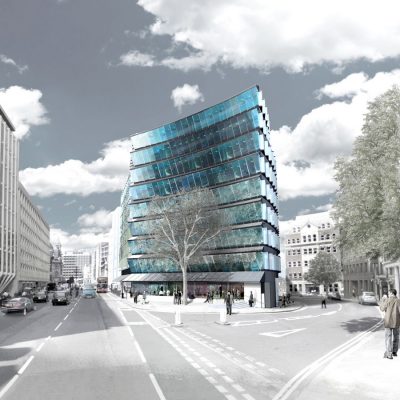
image from architect
Citicape House
Centre Point, tower
Design: Richard Seifert Architect
Central St Giles
Design: Renzo Piano Building Workshop (RPBW)
East London Architecture – Selection
Comments / photos for the Blizard building London Architecture page welcome
Website: blizard.qmul.ac.uk


